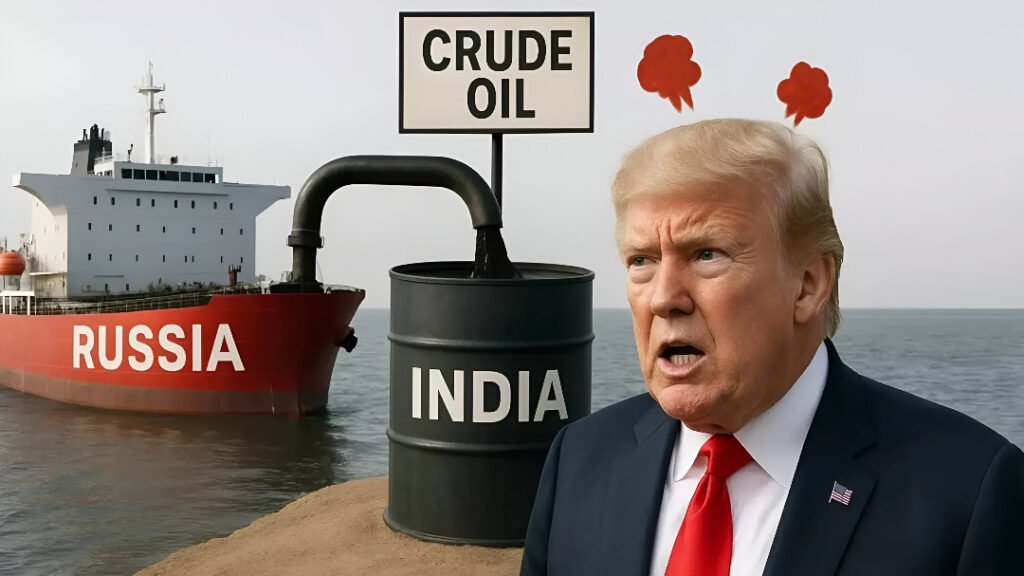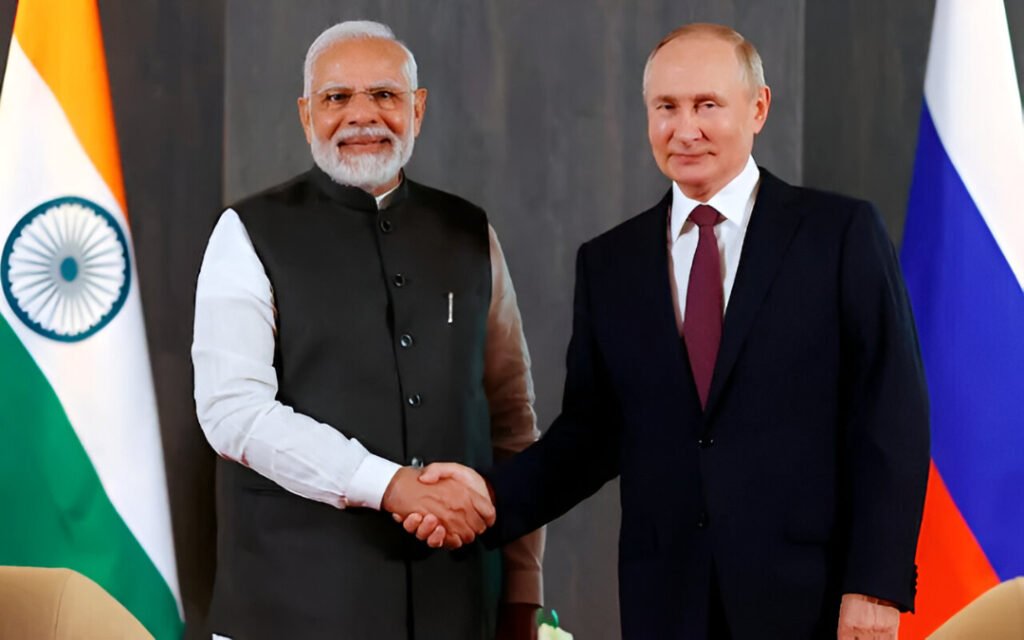
This August, Russian President Vladimir Putin is expected to meet with India’s leaders for a pivotal summit, while US President Donald Trump intensifies tariff threats on Indian exports because New Delhi continues to purchase Russian oil. Against a backdrop of worsening geopolitical tension, the meeting underscores the deepening India-Russia relationship, the realignment of global trade, and the increasing burden of Western sanctions alongside competing energy interests.
Putin’s Visit: Timing and Significance
Based on the information provided by India’s National Security Adviser Ajit Doval, Putin is scheduled to come to India in the second half of August 2025. The visit is timed to the growing difficulties in India’s foreign relations, particularly Washington’s increasingly hardline and aggressive posture on Indian and Russian relations.
The Russian president’s meeting with India’s prime minister, other ministers, and top officials is expected to concentrate on several fronts:
- Coordination on energy relations, particularly Russian oil imports.
- Establishing industrial cooperation in mining, as well as in the manufacturing and technological spheres.
- Cooperation in regional security and defense.
- The deepening of the India-Russia strategic partnership in the context of the changing global equilibrium.
US Tariffs and Their Economic Impact

Ahead of Putin’s visit, Trump announced an additional 25% tariff on Indian goods, increasing the total tariff to 50% on crucial exports. This punishment is meant to check Indian imports of discounted Russian crude, pegging these purchases to India’s weakening Western alliance post the 2022 Ukraine invasion.
Key highlights:
- The new tariffs will come into effect on August 27, 2025, with the potential to reduce Indian exports to the US by 60%.
- In 2024, India exported goods worth approximately $87b to the US, making it India’s largest export partner.
- Experts predict the tariffs will reduce India’s GDP growth by up to 1% for the next two years, with the textile, footwear, and jewelry industries being the most affected.
Why India Stands Firm with Russia
Through the rising costs of tariffs, India remains steadfast in its defense of the energy partnership with Russia, with New Delhi claiming that:
- The energy security of 1.4 billion people necessitates diversified and reliable sources of oil.
- Russian crude is cheaper and bolsters the domestic economy.
- India has pointed out time and again how the West has been two-faced by continuing to trade crucial goods with Russia while imposing their own trade restrictions.
The recent agreements signed this week between India and Russia enhance cooperation in aluminum, fertilizers, and rare earths—critical to India’s manufacturing and technology sectors.
Geopolitical Stakes: Realignments and Risks

The upcoming visit from Putin is symbolic of the strengthening bonds between India and Russia, particularly as New Delhi attempts to diversify partners with strategic relationships during uncertain times with the US and Europe.
Strategic considerations involve:
- “Reinforcing BRICS cooperation as a counterbalance to Western economic influence.”
- The increase of joint ventures in high technology and defense.
- “Securing alternatives in energy, minerals, and supply chains as Western sanctions disrupt traditional markets.”
The downside to all of this is an increased strain on India’s lucrative trade relationship with the US and being embroiled in the global tug-of-war between Washington and Moscow.
Conclusion
Putin’s visit in August shines a spotlight on the elaborate balancing India needs to perform—protecting national and energy interests while grappling with the fallout from the US. As the leading powers of the world amplify their competition for resources and influence, New Delhi’s next moves could transform the region’s economy and geopolitical alliances.
Putin’s trip, against the backdrop of Trump’s aggressive tariffs, signals a pivotal moment: India is betting on strategic diversification and self-reliance, even as the costs and challenges of global power shifts come home to roost.











